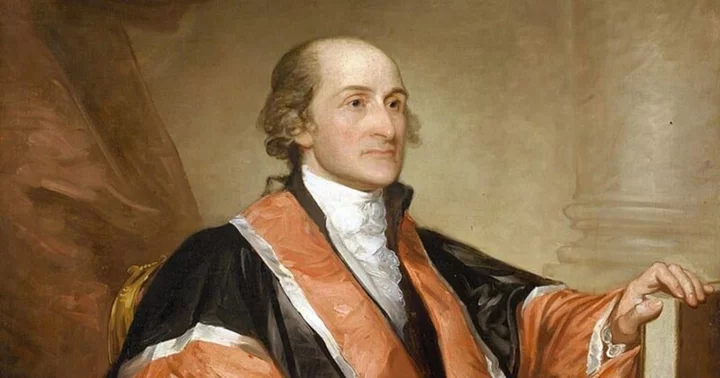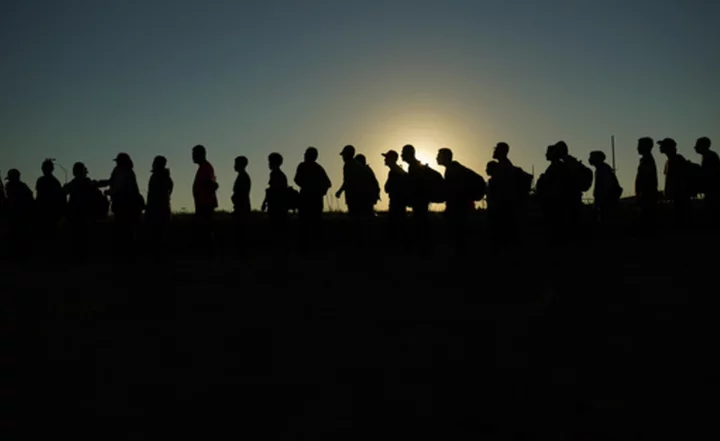On this day in history, October 19, 1789, John Jay, one of the nation’s founding fathers and a prominent intellectual of his time, was sworn in as the first chief justice of the Supreme Court of the United States.
Jay who was born on December 12, 1745, in New York City, had one of the shortest tenures for the esteemed lifetime position, holding the title until his resignation on June 29, 1795. The title of Chief Justice of the Supreme Court has been held by only 16 people in the 227 years that have passed, per Fox News.
It is also said that Jay was governor for six years, ending in 1801.
John Jay was 'unique in his superior virtue'
The National Portrait Gallery of the Smithsonian Institution praised the pivotal figure in American history, saying, "John Jay filled more high offices than any other Founding Father, including president of the Second Continental Congress, secretary of foreign affairs under the Articles of Confederation, and, most famously, the Supreme Court's first chief justice."
"Washington saw Jay as unique in his superior virtue and objectivity and appointed him chief justice with great confidence in his qualifications," added the National Portrait Gallery tribute.
Who nominated John Jay as Supreme Court chief justice?
In September 1789, John Jay respectfully turned down an offer from George Washington to serve as Secretary of State, a role that would have essentially extended his tenure as Secretary of Foreign Affairs. In response, Washington proposed a new role to Jay, describing it as "the keystone of our political fabric," the position of Chief Justice of the United States. Jay accepted this offer.
On September 24, 1789, the same day that the Judiciary Act of 1789 was signed into law (thereby establishing the position of Chief Justice), Washington officially nominated Jay. The US Senate unanimously confirmed Jay’s nomination on September 26, 1789, and Washington signed and sealed Jay’s commission on the same day. Jay took his oath of office on October 19, 1789, per US Senate.
What was Jay Court's first case?
The term Jay Court describes the United States Supreme Court during the period from 1789 to 1795 when John Jay was the country's first Chief Justice. The first case heard by the Jay Court was West v. Barnes (1791), which came up early in the Court's third term.
The Court was presented with an early opportunity to establish the principle of judicial review in the United States through a case that revolved around a Rhode Island state statute allowing debt payments to be made in paper currency.
However, instead of addressing the constitutionality of the law, the Court unanimously resolved the case based on procedural grounds, adhering strictly to statutory requirements.
"The most famous case he presided over was Chisholm v. Georgia (1793), most commonly associated with the introduction of judicial review. However, the court decision was later overturned by the ratification of the Eleventh Amendment," per ConstitutionFacts.com.
John Jay's retirement
On June 29, 1795, Jay stepped down as chief justice, at the age of just 49.
"He became governor of New York in 1795, organized the New York Manumission Society, and helped pass a gradual emancipation law in 1799 that led to the eventual end of slavery in New York in 1827," states George Washington's Mount Vernon.
"Jay left the governorship of New York in 1801 to go into retirement, and passed away in 1829."
What is Jay's Treaty?
The Jay's Treaty, formally named the "Treaty of Amity Commerce and Navigation, between His Britannic Majesty; and The United States of America," was negotiated by the Chief Justice of the Supreme Court, John Jay, and signed between the United States and Great Britain on November 19, 1794, per LOC.
How did John Jay die?
Jay was likely the victim of a stroke when he became ill on the evening of May 14, 1829. He died in Bedford, New York, on May 17 after three days of life.
Jay’s enduring legacy is evident in his home state of New York, where numerous locations and educational institutions bear his name.
These include Fort Jay on Governors Island, John Jay Park in Manhattan, The John Jay College of Criminal Justice, the John Jay Educational Campus in Brooklyn, and John Jay High School in Cross River.









